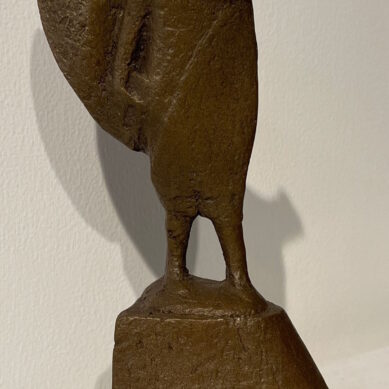You searched
Painter
Felice Casorati
Are you interested in the sales or the purchase of his artworks?
We buy works of this artist
and of other painters and sculptors from the 16th century to the first half of the 20th century
The Berardi gallery offers a free and without obligation service for evaluation of ancient and modern art . To find your way in the art market, very complex and full of nuances, it is better to rely on a professional consultant who can answer fast and concretely to your needs. The clarity of the answers will resolve effectively the need to estimate or sell an asset.
Contact us immediately without commitment
Answers also in 24 hours:
Felice Casorati
Felice Casorati
Felice Casorati, born into a cultured family in Novara in 1883, graduated in law in 1906. During his years of study, he began his fatal approach to painting, so much so that he abandoned the legal profession to devote himself entirely to art. His career quickly took off: in 1907 he made his debut at the Venice Biennale with a Portrait that attracted positive critical acclaim.
Symbolist beginnings
In 1908 he moved to Naples and remained there until 1911, working on portraits that on the one hand already revealed echoes of the ancient Italian tradition and on the other referred to the Symbolist language of the Spanish painter Ignacio Zuloaga.
The figure paintings sent to the 1909 Biennale, Old women and The Actress’s Daughters, and to the 1910 Biennale, The Heiresses, are an expression of this phase. In the same year, he had the opportunity to visit Gustav Klimt’s exhibition in Venice, immediately approaching his Secessionist approach.
From 1911 to 1915 he lived in Verona and frequented the group of artists at Ca’ Pesaro, influenced by Jugendstil poetics and Art Nouveau and Secessionist linearism. It is no coincidence that the pictorial expressions of this phase fully reflect the Symbolist climate: People appeared at the International Exhibition in Rome in 1911 and The pomegranate dream at the Roman Secession in 1913, a painting in which it is impossible not to detect suggestions from Pre-Raphaelite art, Secessionist decorativism and Klimt’s two-dimensionality. A delicate Art Nouveau symbolism pervades Rainbow, Milky Way and Transfiguration, three wonderful paintings presented at the 1914 Biennale.
The following year he was given a solo exhibition at the Roman Secession, where he presented evocative works with a strong spiritual meaning and a robust graphic style derived from the Nordic Secessions. Composition sees the construction of a vertical space in which elongated and threadlike female figures, typical of the language of Hodler or Klimt, populate a strongly expressionist landscape.
The return to order: a silent and enigmatic dimension
During the war years, his artistic experience was interrupted, only to resume on the threshold of the 1920s. A gradual return to order emerged in him, first through a series of solitary and hermetic, almost metaphysical compositions such as Waiting.
The real reappraisal of antiquity came in 1920, when the 15th century came into the limelight in his hieratic and solid compositions, which no longer had anything to do with the Secession. Two-dimensionality disappeared in favour of a volume in the style of Masaccio and Piero della Francesco, and the clear Art Nouveau outline gave way to delicate tonal passages derived from the study of Renaissance colourism.
The model of the old masters, from Masaccio to Paolo Uccello
Meriggio, presented at his solo exhibition at the Venice Biennale in 1924, fully represents this transition: the perspective, the foreshortening of bodies present in Mantegna or Paolo Uccello returns in Casorati’s magical compositions, governed by a mysterious sense of stillness. Magical Realism emerges from works such as Sleeping Girls, Daphe, Statues of a Musical Subject at the Gualino Theatre.
Having achieved enormous success, in 1926 and 1929 he took part in Margherita Sarfatti’s Novecento exhibitions. Towards the Thirties, the antique rigour began to give way to a sort of expressionism inspired by the “Six of Turin” group.
At the Quadriennale in Rome in 1931 he had a solo exhibition in which he presented a series of still lifes, portraits, landscapes and compositions, including Three Sisters, Naked Girl, Spring, My Mother, Cucumbers, Cobbler, Susanna and Apples. In 1941 he was appointed teacher of painting at the Accademia Albertina, never interrupting his pictorial activity, always in the sign of the ancient approach, though not free from abstract influences in his later years. At the height of his pictorial, engraving and scenographic activity, he died in Turin in 1963.
Elena Lago





